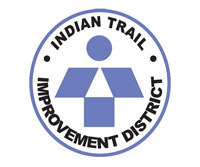The Indian Trail Improvement District Board of Supervisors last month approved a policy regarding the permitting of obstructions, including communication cabinets, on road rights of way.
At the June 20 meeting, ITID Engineer Jay Foy said that by state law, the district cannot forbid cabinets on rights of way, but it can severely restrict their locations due to field of sight for motorists, aesthetics and preserving driveway rights of way.
Foy explained that the purpose of the policy is to regulate the obstructions, primarily communication cabinets, in the rights of way.
“There has been a lot of discussion on those lately,” he said, explaining that the proposed policy includes moving the obstructions as close to the easement line as possible away from the road. “It makes sense. That’s what we do anyway.”
The policy includes that obstructions may not be placed in a permittable driveway location.
“You cannot put a permittable driveway within 12 feet of a common property line, so that’s 24 feet of the whole two lots that they can put an obstruction, so it’s very limiting,” Foy said. “On corners, it has to be 30 or 40 feet away, according to what the intersection looks like, so you limit future obstructions to a very small distance at the property lines.”
Foy added that another condition is that the obstruction must be at least six feet from the road or farther depending on the speed limit, and that the obstruction cannot block the field of drive sight.
“That’s when you come up to an intersection, and you have an obstruction in view of where the car is coming at the posted speed limit. Then you can’t see it with enough reaction time to get out safely,” Foy said. “The problem with that is that people don’t go at the posted speed limit.”
The policy corrects for motorists driving above the speed limit. “We added plus 10 mph, so that if someone’s doing 50 in a 40 mile an hour zone, you still have the proper reaction time,” he said. “We highly recommend that you adopt that policy, too. It’s much safer.”
Similarly, the obstruction must not have corner clips or aesthetic hedges concealing the obstruction that will obstruct view.
“We don’t have a lot of corner clips out here, but you are required to have a clear area where you don’t have a lot of vegetation within 25 feet at the corner, so you can see what’s coming,” Foy said. “You cannot put it within that 25 feet. The people putting in for these permits are extremely limited to where they can be.”
The culvert installation must also meet the district’s driveway policy, which includes having a mitered end so that a vehicle that veers off the road into the culvert end will not meet with a blunt end but be directed upward.
If there is an existing pedestrian path, that will have to be deflected around the obstruction, away from the roadway. The permittee will need to adjust existing pathways that are in conflict with the proposed obstruction.
The policy also restricts obstructions to no more than two per lot.
“This could become quite controversial,” Foy said. “We have four or five out there on some lots. If you adopt this policy, they will be allowed what the code of ordinances call ‘non-compliant applications.’ That means if they are there, they stay there, but they can’t make them worse, and if they come in for a permit in that area, they’ve got to meet the new code. If they have four, they will have to remove two. We recommend that. We think that two per lot is enough. The utility companies aren’t here, but they might complain about that.”
ITID President Betty Argue said she favored that regulation because communication cabinets reduce the value of the properties.
“I had a resident call me recently saying FPL was putting in new concrete poles and they’ve got markers, and one of them is right in the center of her living room window in front of her property,” Argue said. “That’s really ugly and egregious, in my opinion, so I agree to the limitation of the two.”
Foy added that the last regulation includes that the obstruction have some sort of aesthetic wrapping approved by the ITID Board of Supervisors.
“We did specifically talk about wrappings, and I don’t want to be the judge of aesthetics,” he said. “I’m not a good judge of that.”
Argue said that she did not want to spend meeting time picking out wraps for communication boxes.
“I think that we can have some board-approved wraps or some designs or something, and the manager can be the one that approves that,” she said. “That’s not a good use of our time.”
ITID Manager Rob Robinson said he would come up with some proposed wraps for the board’s approval.
“Something equestrian and some modern stuff and nothing over the top,” Robinson said. “Something that meets our community and its standards, and we’ll have several to pick from, so we don’t have the same thing on every corner.”
Supervisor Ralph Bair made a motion to approve the policy, which carried 5-0.








